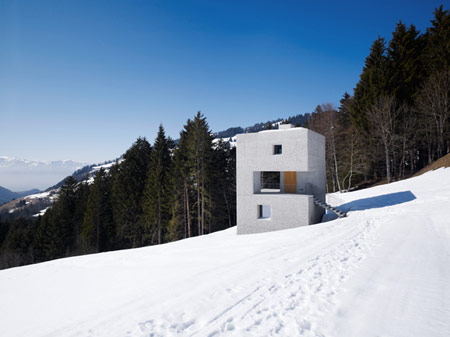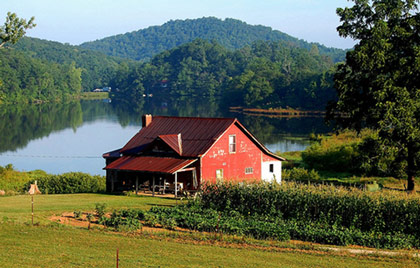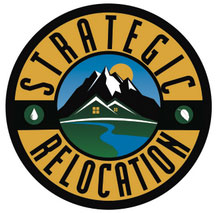Editor’s Note: The following guide has been provided by survival and preparedness expert Joel Skousen. It has been contributed for by the Strategic Relocation web site.
In previous briefs we covered several key aspects of relocation, including How To Position Yourself To Survive A Major TEOTWAWKI Event and The Reality Of Survival Communities and Ready Retreats. There’s also an incredibly insightful guide on the The Gut Wrenching Reality of Bugging Out.
In this analysis Skousen identifies the key problems facing those living in big cities as they relate to the feasibility of either moving to or maintaining a more remote location outside of highly populated areas.
Have you considered the terrain or cover required for perimeter defense? What about the growing climate; will you have the ability to grow food or raise animals in the middle of winter? Where will you get water in hot climates? If you’re not around to watch over your supplies will you bury them or secure them in a basement? All of these are important factors that help make up a whole and complete relocation strategy.
Whether you are looking for a permanent homestead outside of the big city or an emergency retreat to which you can escape in the event of a widespread emergency, the following considerations will be invaluable as you search for your perfect property. Whatever your preference, whether it be a mountain retreat, a farming homestead or just a cabin in the woods, it is important to understand the benefits and drawbacks that you’ll face should you ever have to utilize your property as a survival base.
Joel Skousen, as always, points us in the right direction and provides some critical guidelines that must be taken into account before you make your move.
And when you’re ready to make that move, we strongly recommend that you check out national listings for survival retreat properties at Strategic Relocation.
It can be a daunting task finding that perfect homestead or retreat – if you have questions we urge you to contact the professionals at Survival Retreat Consulting. This is what they do. Don’t be afraid to reach out to them for assistance.
Strategic Relocation Briefing: Overview of Retreat Strategies
By Joel Skousen
Author, Strategic Relocation and The Secure Home
The need for a retreat strategy and a physical place to go in a crisis is a core concept of preparedness, and the reason is simple: Most people live in unsafe major metropolitan areas and can’t relocate because they are tied to a job, and the jobs are tied to the city. Sadly, all metro areas are unsafe simply because hundreds of thousands of people are concentrated in one area and completely dependent on a fragile set supply infrastructure that will someday fail in a major way.
Even people with a lot of money who still work often can’t afford to live in rural safety full time because of the time, expense and impracticality of commuting long distance to work. Even if they did choose to do that, the breadwinner(s) is at risk of being trapped in the city at the workplace (or in transit) when something big goes down.
A popular phrase among preppers is to prepare to “bug-out” (bug-out bag, bug-out vehicle, bug-out location, etc.). It’s not my favorite concept because it implies having to get out of town in a hurry because you got surprised like everyone else by the sudden crisis. And, that puts you at risk of being caught in the inevitable Katrina-like traffic jams—and you know how that turned out.

I, for one, want as much advance notice as possible so I don’t get stuck trying to “bug-out” at the last minute. That’s why I keep track of what’s going on in the world, in detail, and not just from alternative sources, which are often filled with disinformation. I especially like to track what the Powers That Be are planning for us in their hidden agenda related to global control and the continual wars they create in order to give them the excuse to diminish liberty. That’s the primary reason why I publish the weekly World Affairs Brief. Any of you can get a free sample copy just by emailing me at “editor” @ worldaffairsbrief.com.
Preparing to bug-out, of course, is better than nothing (and usually the cheapest part of preparing), but you really need someplace to go that is prepared as a retreat, complete with shelter and long-term food and water supplies. That can be as simple as a camp you’ve prepared in advance with buried supplies (a tough go in the winter) or a cabin in the mountains you’ve prepared perhaps together with relatives or like-minded friends, which is a whole different level of expenditure.

The rural mountain retreat in a forested area is the first thing people think about in a retreat strategy, and it does provide safety from the masses when you select a location not visible from any paved roads and concealed among trees. But there are two major risks in choosing a remote mountainous location:
1) You have to be able to get there, and distance and terrain can present a problem.
2) You must have concealed, hardened basement space for your storage and significant security features on windows, walls and doors to ensure your stockpiles will still be there when you arrive.
Lonely cabins in the mountains are often targets for theft and break-ins from hunters or others simply taking advantage of the isolated situation where detection of crime is improbable.
The main disadvantage of the mountain cabin retreat is that such properties are rarely suitable for growing, either because of altitude or rocky, sloped soil. This is especially true in the West. In the East most of the mountains are low in enough that altitude is not a problem, but tree shading and sloping rocky soil is.
So, while the mountain retreat offers great short term retreat safety, it may be a problem during a long-term famine that is very likely during a major social breakdown caused by the grid going down or a nuclear war. Don’t disregard the war scenario out of hand. Anyone who is watching the growing aggression of Russia and China can see that this coming threat as a grim future reality, despite the continual denial by government and the establishment media. But, it is telling that our government (and retired insiders) are making major preparations for nuclear war, so they know something they aren’t telling the rest of us about.
Stored food supplies are limited depending on how much you can afford and how much secure storage space you have, in a secure location. The longer the period of social unrest lasts—and it will get worse the longer public services are out of commission—the increased likelihood that your stored supplies will run out and you’ll have to revert to growing food. Those who are relying upon a suburban garden plot for food during a widespread famine and social unrest will find their efforts overrun with hungry, desperate people stealing food even before it is ripe.

All of this points to the need for a rural farm retreat is to be able to grow food during the first or second growing season during war or as the result of long term social unrest when urban infrastructure and supplies are halted. A farm retreat can serve the same purpose as a mountain retreat if it is far enough away from major refugee flows and hidden from view. That’s harder to do with a farm because farmland requires large sunny open areas and relatively flat land, as well as access to irrigation or well water. But it can be done.
One of the most important features to look for in a survival farm is privacy. Good farm land is usually in the proximity of other farms. Try to find land that has fairly dense forested areas between the fields and any passing roads. Southern Missouri and Southeastern Oklahoma are a couple of the best states for finding prime farmland interspersed with hills and trees. Parts of eastern Kansas also are good.
In those states the tree cover is mostly deciduous, meaning they lose their leaves in winter, diminishing your privacy. So, you may have to augment the tree cover with dense bushes or conifer trees that provide cover even in winter. Fencing and gates are also important to deter entrance, and to give you one more important confirmation that any intruder found on your property just didn’t wander across unimpeded.
Farms out in the Far West don’t have a lot of tree cover, except in northern Idaho and Montana, where fir and pine trees abound at lower altitudes. And, make sure the farmland comes with irrigation water rights.
In some of the desert states you even have to have a water right to give up in order to obtain a permit to drill a well for a home and garden. Have the soil tested for fertility and mineral composition. And, avoid land that has GMO crops planted on it—especially the “Round-up Ready” variety. Round-up pollutes the soil and some of its chemicals permanently bind to soil minerals. Remediation is costly.
Check out Strategic Relocation for the latest private listing on farm and mountain retreat land where many new Colorado properties have come on the site and contact Todd Savage to get confidential referrals to Survival Realtors.
Survival Retreat Consulting: Remember to keep the defensive criteria in mind as you shop around for your property. Sometimes it can be easy to get enchanted with a spectacular stream or beautiful meadow and building spot and not realize that the property may have defensive issues. After you have found that perfect retreat be sure and check out these two informational articles on OPSEC and Retreat Defense.
Our friends over at Survival Disaster Shelters build many individual components for your safe rooms or shelter and currently have a completed 70-foot long 6 person NBC Bunker ready for delivery and reduced by 20%!
The shelter comes complete with the following: One self contained subterranean steel shelter 9 foot diameter @ 70 feet long w/ – 75 CFM Lunor air filtration system HEPA & NBC- 1 Emergency egress man-way -*- 2.5 Onan LP generator -*- Battery bank w/ 2 lithium Ion batteries -*- Internal 12 v pressurized water system – *- Closed sanitation system-Internal grey water recycling system for head-*- Communication station with through ports -*- Sleeping bunks for 6 w/ mattresses -*- 1 Gen set exhaust and 1 cabin heater-*- 2 Interior stainless steel reinforced marine hatches with viewing ports- Stainless steel kitchen counter top -*- Kitchen sink with pressurized water pump faucets-*- Magic Chef LPG range-*-Two 12v stand up solar freezer/fridge -*- Dinette booth with table -*- A “Ft. Knox” vault door to a carpeted vault with lighting -*- Bathroom with shower, 9′ head, clothes washer/ringer -*- Shelving through out for food/gear/etc.-*- 1 back up NBC air filtration filter electric/manual.
Important Reading:
The Gut Wrenching Reality: One of the Best Bug-Out Strategy Guides You’ll Ever Read
How To Position Yourself To Survive A Major TEOTWAWKI Event
The Reality Of Survival Communities and Ready Retreats
Read Previous Strategic Relocation Briefs
Source:: ShtfPlan




